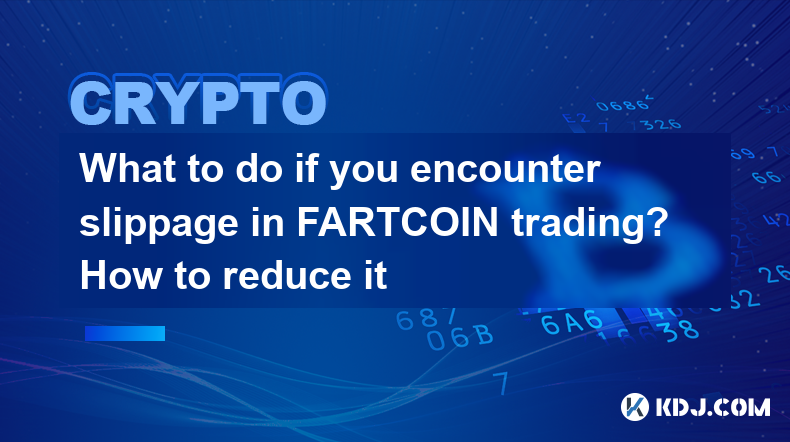-
 Bitcoin
Bitcoin $107,770.4059
-1.97% -
 Ethereum
Ethereum $2,493.7356
-3.93% -
 Tether USDt
Tether USDt $1.0002
-0.02% -
 XRP
XRP $2.2203
-2.55% -
 BNB
BNB $652.1421
-1.54% -
 Solana
Solana $146.9193
-3.62% -
 USDC
USDC $1.0002
0.02% -
 TRON
TRON $0.2838
-0.55% -
 Dogecoin
Dogecoin $0.1628
-5.62% -
 Cardano
Cardano $0.5703
-4.75% -
 Hyperliquid
Hyperliquid $38.6498
-4.85% -
 Sui
Sui $2.8450
-5.48% -
 Bitcoin Cash
Bitcoin Cash $489.1135
-1.87% -
 Chainlink
Chainlink $13.0730
-4.91% -
 UNUS SED LEO
UNUS SED LEO $9.0733
0.42% -
 Avalanche
Avalanche $17.7084
-4.89% -
 Stellar
Stellar $0.2381
-2.40% -
 Toncoin
Toncoin $2.7521
-3.88% -
 Shiba Inu
Shiba Inu $0.0...01134
-4.70% -
 Litecoin
Litecoin $86.6015
-3.52% -
 Hedera
Hedera $0.1529
-4.15% -
 Monero
Monero $314.6637
-0.97% -
 Dai
Dai $0.9999
-0.01% -
 Polkadot
Polkadot $3.3457
-5.84% -
 Ethena USDe
Ethena USDe $1.0001
-0.01% -
 Bitget Token
Bitget Token $4.3968
-3.94% -
 Uniswap
Uniswap $6.9333
-9.10% -
 Pepe
Pepe $0.0...09620
-5.08% -
 Aave
Aave $264.0087
-5.99% -
 Pi
Pi $0.4674
-4.92%
What to do if you encounter slippage in FARTCOIN trading? How to reduce it
Slippage in FARTCOIN trading occurs when the executed price differs from the expected price due to volatility, low liquidity, or order execution delays. Use limit orders and trade during high liquidity to minimize it.
May 02, 2025 at 02:28 am

Slippage is a common phenomenon in cryptocurrency trading, including trading FARTCOIN, where the actual executed price of a trade differs from the expected price. This can happen due to various factors such as high volatility, low liquidity, or delays in order execution. In this article, we will explore what to do if you encounter slippage in FARTCOIN trading and how to reduce it.
Understanding Slippage in FARTCOIN Trading
Slippage occurs when there is a difference between the expected price of a trade and the price at which the trade is actually executed. For instance, if you place an order to buy FARTCOIN at $1.00, but the order is filled at $1.05 due to rapid price changes, you have experienced positive slippage. Conversely, if you placed a sell order at $1.00 and it was filled at $0.95, you have experienced negative slippage.
In FARTCOIN trading, slippage can be particularly pronounced due to the token's potential for high volatility and lower liquidity compared to more established cryptocurrencies. Understanding the causes of slippage is the first step toward mitigating its impact on your trading.
Identifying Causes of Slippage in FARTCOIN
Several factors can contribute to slippage when trading FARTCOIN:
- Market Volatility: FARTCOIN, like many cryptocurrencies, can experience rapid price changes. If the market moves quickly between the time you place your order and when it is executed, you may experience slippage.
- Low Liquidity: If there are not enough buyers or sellers at the price you want to trade FARTCOIN, your order might be filled at a different price, resulting in slippage.
- Order Type: Using market orders instead of limit orders can increase the likelihood of slippage, as market orders are filled at the best available price, which may differ from your intended price.
- Network Congestion: Delays in blockchain transactions can lead to slippage, especially if the order takes longer to execute than anticipated.
Strategies to Reduce Slippage in FARTCOIN Trading
To minimize the impact of slippage when trading FARTCOIN, consider implementing the following strategies:
- Use Limit Orders: Instead of using market orders, use limit orders to specify the exact price at which you are willing to buy or sell FARTCOIN. This can help you avoid unexpected price changes.
- Trade During High Liquidity Periods: Try to execute your trades during times when FARTCOIN has higher trading volumes. This can reduce the risk of slippage due to low liquidity.
- Monitor Market Conditions: Keep an eye on FARTCOIN's price movements and market news. Understanding the current market conditions can help you anticipate potential slippage and adjust your trading strategy accordingly.
- Use Slippage Tolerance Settings: Some trading platforms allow you to set a slippage tolerance, which specifies the maximum amount of slippage you are willing to accept. Adjusting this setting can help you manage slippage more effectively.
Practical Steps to Implement Slippage Reduction Strategies
Here are some practical steps you can take to reduce slippage when trading FARTCOIN:
Setting Up Limit Orders:
- Open your trading platform and navigate to the FARTCOIN trading pair.
- Select the "Limit Order" option.
- Enter the desired price at which you want to buy or sell FARTCOIN.
- Set the amount of FARTCOIN you wish to trade.
- Review your order details and submit the order.
Identifying High Liquidity Periods:
- Use trading volume charts to identify times when FARTCOIN has higher trading volumes.
- Plan your trades around these periods to minimize the risk of slippage due to low liquidity.
Setting Slippage Tolerance:
- Check if your trading platform supports slippage tolerance settings.
- Navigate to the settings or advanced options section of your trading platform.
- Adjust the slippage tolerance to a level you are comfortable with, typically expressed as a percentage or a fixed amount.
Monitoring and Adjusting Your Trading Strategy
Even after implementing these strategies, it is important to continuously monitor and adjust your trading approach to manage slippage effectively. Here are some tips for ongoing management:
- Regularly Review Your Trades: After each trade, review the execution price and compare it to your intended price to understand any slippage that occurred.
- Adjust Your Strategy: Based on your review, adjust your trading strategy. For example, if you notice frequent slippage during certain times of the day, consider trading at different times.
- Stay Informed: Keep up-to-date with news and developments related to FARTCOIN and the broader cryptocurrency market. Market events can impact liquidity and volatility, which in turn can affect slippage.
Utilizing Trading Tools and Platforms
Certain trading tools and platforms can help you better manage slippage when trading FARTCOIN. Here are some options to consider:
- Advanced Order Types: Some platforms offer advanced order types, such as stop-limit orders or iceberg orders, which can help you manage slippage more effectively.
- Trading Bots: Automated trading bots can execute trades based on predefined criteria, potentially reducing the risk of slippage by acting more quickly than manual trading.
- Liquidity Aggregators: Platforms that aggregate liquidity from multiple sources can provide better order execution and reduce slippage.
Frequently Asked Questions
Q: Can slippage be completely eliminated when trading FARTCOIN?
A: While it is not possible to completely eliminate slippage, you can take steps to minimize its impact by using limit orders, trading during high liquidity periods, and setting slippage tolerance levels.
Q: Does slippage only occur in volatile markets?
A: Slippage can occur in any market, but it is more common in volatile markets like FARTCOIN due to rapid price changes and potential liquidity issues.
Q: How does the choice of trading platform affect slippage when trading FARTCOIN?
A: The choice of trading platform can significantly impact slippage. Platforms with higher liquidity and advanced order types can help reduce slippage. Additionally, platforms that offer slippage tolerance settings give you more control over managing slippage.
Q: Is there a difference between positive and negative slippage in FARTCOIN trading?
A: Yes, positive slippage occurs when the execution price is better than the expected price (e.g., buying FARTCOIN at a lower price than intended), while negative slippage occurs when the execution price is worse (e.g., selling FARTCOIN at a lower price than intended). Both types of slippage can impact your trading outcomes.
Disclaimer:info@kdj.com
The information provided is not trading advice. kdj.com does not assume any responsibility for any investments made based on the information provided in this article. Cryptocurrencies are highly volatile and it is highly recommended that you invest with caution after thorough research!
If you believe that the content used on this website infringes your copyright, please contact us immediately (info@kdj.com) and we will delete it promptly.
- Bitcoin's Pattern Break: Are HODLers the Key to the Next Surge?
- 2025-07-04 18:50:12
- Bitcoin Price, Trump's Bill, and the $150K Dream: A NYC Take
- 2025-07-04 19:50:12
- Ethereum, LILPEPE, and the July Bounce: Will Pepe Steal ETH's Thunder?
- 2025-07-04 19:10:12
- Binance Institutional Loans: Unlocking 4x Leverage and Zero Interest for Whales
- 2025-07-04 19:15:12
- Bitcoin Bull Run: Analysts Eye Peak in Late 2025?
- 2025-07-04 19:20:13
- Pepe Indicators, Bullish Forecast: Can the Meme Coin Rally?
- 2025-07-04 19:25:12
Related knowledge

How to customize USDT TRC20 mining fees? Flexible adjustment tutorial
Jun 13,2025 at 01:42am
Understanding USDT TRC20 Mining FeesMining fees on the TRON (TRC20) network are essential for processing transactions. Unlike Bitcoin or Ethereum, where miners directly validate transactions, TRON uses a delegated proof-of-stake (DPoS) mechanism. However, users still need to pay bandwidth and energy fees, which are collectively referred to as 'mining fe...

USDT TRC20 transaction is stuck? Solution summary
Jun 14,2025 at 11:15pm
Understanding USDT TRC20 TransactionsWhen users mention that a USDT TRC20 transaction is stuck, they typically refer to a situation where the transfer of Tether (USDT) on the TRON blockchain has not been confirmed for an extended period. This issue may arise due to various reasons such as network congestion, insufficient transaction fees, or wallet-rela...

How to cancel USDT TRC20 unconfirmed transactions? Operation guide
Jun 13,2025 at 11:01pm
Understanding USDT TRC20 Unconfirmed TransactionsWhen dealing with USDT TRC20 transactions, it’s crucial to understand what an unconfirmed transaction means. An unconfirmed transaction is one that has been broadcasted to the blockchain network but hasn’t yet been included in a block. This typically occurs due to low transaction fees or network congestio...

How to check USDT TRC20 balance? Introduction to multiple query methods
Jun 21,2025 at 02:42am
Understanding USDT TRC20 and Its ImportanceUSDT (Tether) is one of the most widely used stablecoins in the cryptocurrency market. It exists on multiple blockchain networks, including TRC20, which operates on the Tron (TRX) network. Checking your USDT TRC20 balance accurately is crucial for users who hold or transact with this asset. Whether you're sendi...

What to do if USDT TRC20 transfers are congested? Speed up trading skills
Jun 13,2025 at 09:56am
Understanding USDT TRC20 Transfer CongestionWhen transferring USDT TRC20, users may occasionally experience delays or congestion. This typically occurs due to network overload on the TRON blockchain, which hosts the TRC20 version of Tether. Unlike the ERC20 variant (which runs on Ethereum), TRC20 transactions are generally faster and cheaper, but during...

The relationship between USDT TRC20 and TRON chain: technical background analysis
Jun 12,2025 at 01:28pm
What is USDT TRC20?USDT TRC20 refers to the Tether (USDT) token issued on the TRON blockchain using the TRC-20 standard. Unlike the more commonly known ERC-20 version of USDT (which runs on Ethereum), the TRC-20 variant leverages the TRON network's infrastructure for faster and cheaper transactions. The emergence of this version came as part of Tether’s...

How to customize USDT TRC20 mining fees? Flexible adjustment tutorial
Jun 13,2025 at 01:42am
Understanding USDT TRC20 Mining FeesMining fees on the TRON (TRC20) network are essential for processing transactions. Unlike Bitcoin or Ethereum, where miners directly validate transactions, TRON uses a delegated proof-of-stake (DPoS) mechanism. However, users still need to pay bandwidth and energy fees, which are collectively referred to as 'mining fe...

USDT TRC20 transaction is stuck? Solution summary
Jun 14,2025 at 11:15pm
Understanding USDT TRC20 TransactionsWhen users mention that a USDT TRC20 transaction is stuck, they typically refer to a situation where the transfer of Tether (USDT) on the TRON blockchain has not been confirmed for an extended period. This issue may arise due to various reasons such as network congestion, insufficient transaction fees, or wallet-rela...

How to cancel USDT TRC20 unconfirmed transactions? Operation guide
Jun 13,2025 at 11:01pm
Understanding USDT TRC20 Unconfirmed TransactionsWhen dealing with USDT TRC20 transactions, it’s crucial to understand what an unconfirmed transaction means. An unconfirmed transaction is one that has been broadcasted to the blockchain network but hasn’t yet been included in a block. This typically occurs due to low transaction fees or network congestio...

How to check USDT TRC20 balance? Introduction to multiple query methods
Jun 21,2025 at 02:42am
Understanding USDT TRC20 and Its ImportanceUSDT (Tether) is one of the most widely used stablecoins in the cryptocurrency market. It exists on multiple blockchain networks, including TRC20, which operates on the Tron (TRX) network. Checking your USDT TRC20 balance accurately is crucial for users who hold or transact with this asset. Whether you're sendi...

What to do if USDT TRC20 transfers are congested? Speed up trading skills
Jun 13,2025 at 09:56am
Understanding USDT TRC20 Transfer CongestionWhen transferring USDT TRC20, users may occasionally experience delays or congestion. This typically occurs due to network overload on the TRON blockchain, which hosts the TRC20 version of Tether. Unlike the ERC20 variant (which runs on Ethereum), TRC20 transactions are generally faster and cheaper, but during...

The relationship between USDT TRC20 and TRON chain: technical background analysis
Jun 12,2025 at 01:28pm
What is USDT TRC20?USDT TRC20 refers to the Tether (USDT) token issued on the TRON blockchain using the TRC-20 standard. Unlike the more commonly known ERC-20 version of USDT (which runs on Ethereum), the TRC-20 variant leverages the TRON network's infrastructure for faster and cheaper transactions. The emergence of this version came as part of Tether’s...
See all articles

























































































